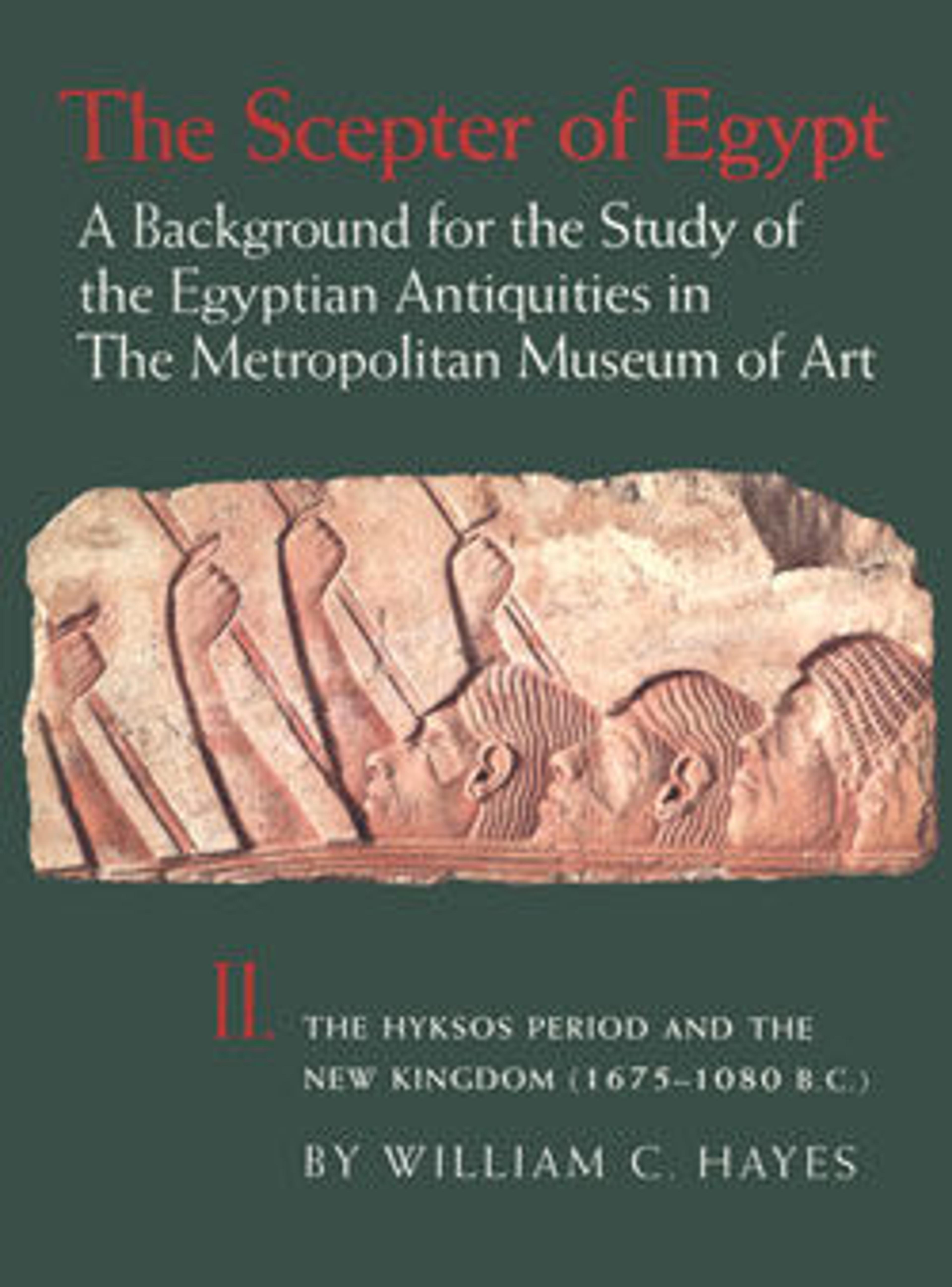Scarab Inscribed with the Name Maatkare (Hatshepsut) Flanked by Two Red Crowns
During the 1926-1927 excavation season, the Museum's Egyptian Expedition uncovered three foundation deposits along the eastern enclosure wall of Hatshepsut's funerary temple at Deir el-Bahri in Western Thebes. Among the contents were 299 scarabs and stamp-seals. Sixty-five of these are now in the Egyptian Museum, Cairo, and the rest were acquired by the Museum in the division of finds.
Among the inscriptions on the bases of these scarabs and seals are examples of every title Hatshepsut held, from the time she was "king's daughter" during the reign of her father, Thutmose I; through the time she was queen of her half-brother, Thutmose II; and during her regency and co-reign with her nephew/step-son, Thutmose III.
After the death of her husband, Hatshepsut became regent for her nephew who was a small child. The length of this regency period is uncertain, with estimates ranging from two to seven years. At some time, probably toward the end of the regency, Hatshepsut adopted the name Maatkare which was usually enclosed in a cartouche and became her throne name as king. The name may be roughly translated as Maat (the goddess of truth) is the life force of Re (the sun god).
On four of the Museum's scarabs (27.3.218 - 27.3.221), the name Maatkare is flanked by hieroglyphs that represent the red crown of Lower Egypt (the Delta region), one of the Two Lands ruled over by the Pharaoh.The hieroglyphs are carved in a similar style and the back designs are nearly identical suggesting that the amulets were carved by the same craftsman, or by a pair of craftsmen; one who specialized in carving the scarab and the other adding the inscription. A fifth scarab (27.3.240) probably belongs to the same group.
Among the inscriptions on the bases of these scarabs and seals are examples of every title Hatshepsut held, from the time she was "king's daughter" during the reign of her father, Thutmose I; through the time she was queen of her half-brother, Thutmose II; and during her regency and co-reign with her nephew/step-son, Thutmose III.
After the death of her husband, Hatshepsut became regent for her nephew who was a small child. The length of this regency period is uncertain, with estimates ranging from two to seven years. At some time, probably toward the end of the regency, Hatshepsut adopted the name Maatkare which was usually enclosed in a cartouche and became her throne name as king. The name may be roughly translated as Maat (the goddess of truth) is the life force of Re (the sun god).
On four of the Museum's scarabs (27.3.218 - 27.3.221), the name Maatkare is flanked by hieroglyphs that represent the red crown of Lower Egypt (the Delta region), one of the Two Lands ruled over by the Pharaoh.The hieroglyphs are carved in a similar style and the back designs are nearly identical suggesting that the amulets were carved by the same craftsman, or by a pair of craftsmen; one who specialized in carving the scarab and the other adding the inscription. A fifth scarab (27.3.240) probably belongs to the same group.
Artwork Details
- Title: Scarab Inscribed with the Name Maatkare (Hatshepsut) Flanked by Two Red Crowns
- Period: New Kingdom
- Dynasty: Dynasty 18, early
- Reign: Joint reign of Hatshepsut and Thutmose III
- Date: ca. 1479–1458 B.C.
- Geography: From Egypt, Upper Egypt, Thebes, Deir el-Bahri, Temple of Hatshepsut, Foundation Deposit 8 (H), MMA excavations, 1926–27
- Medium: Steatite (glazed)
- Dimensions: L. 1.7 cm (11/16 in.); W. 1.2 cm (1/2 in.)
- Credit Line: Rogers Fund, 1927
- Object Number: 27.3.219
- Curatorial Department: Egyptian Art
More Artwork
Research Resources
The Met provides unparalleled resources for research and welcomes an international community of students and scholars. The Met's Open Access API is where creators and researchers can connect to the The Met collection. Open Access data and public domain images are available for unrestricted commercial and noncommercial use without permission or fee.
To request images under copyright and other restrictions, please use this Image Request form.
Feedback
We continue to research and examine historical and cultural context for objects in The Met collection. If you have comments or questions about this object record, please contact us using the form below. The Museum looks forward to receiving your comments.
